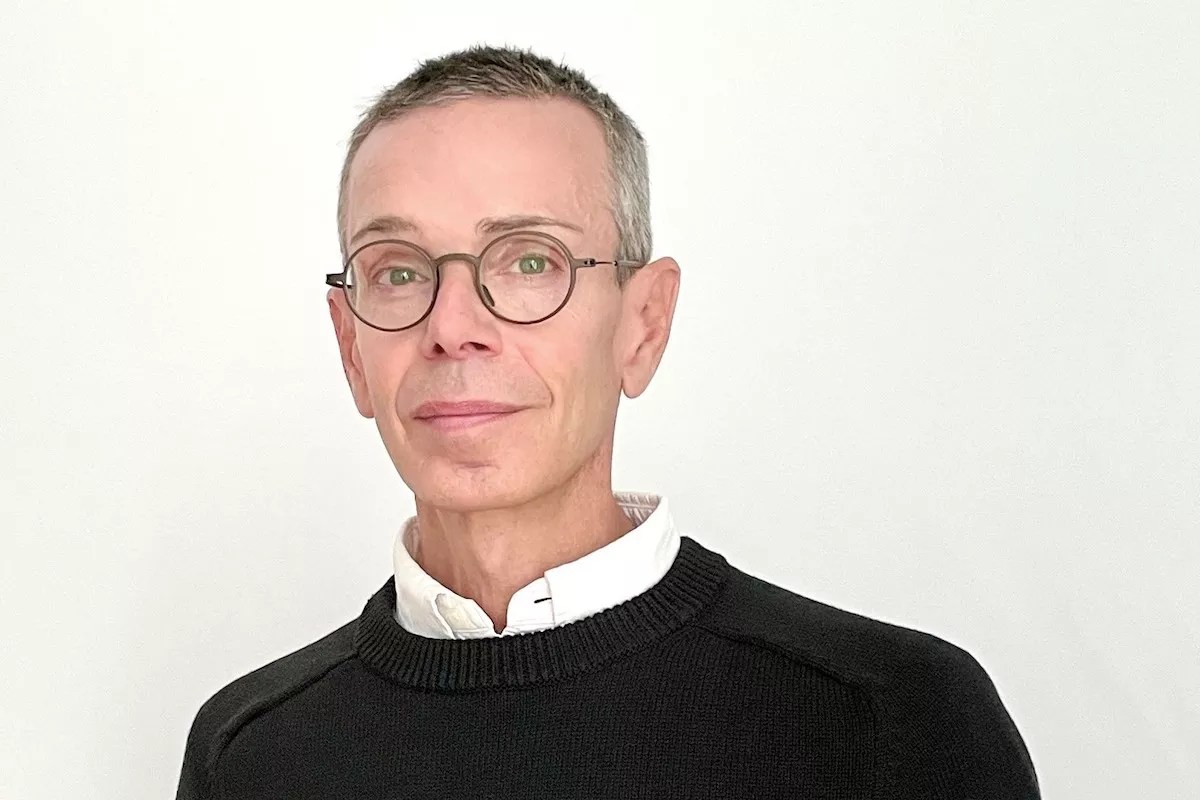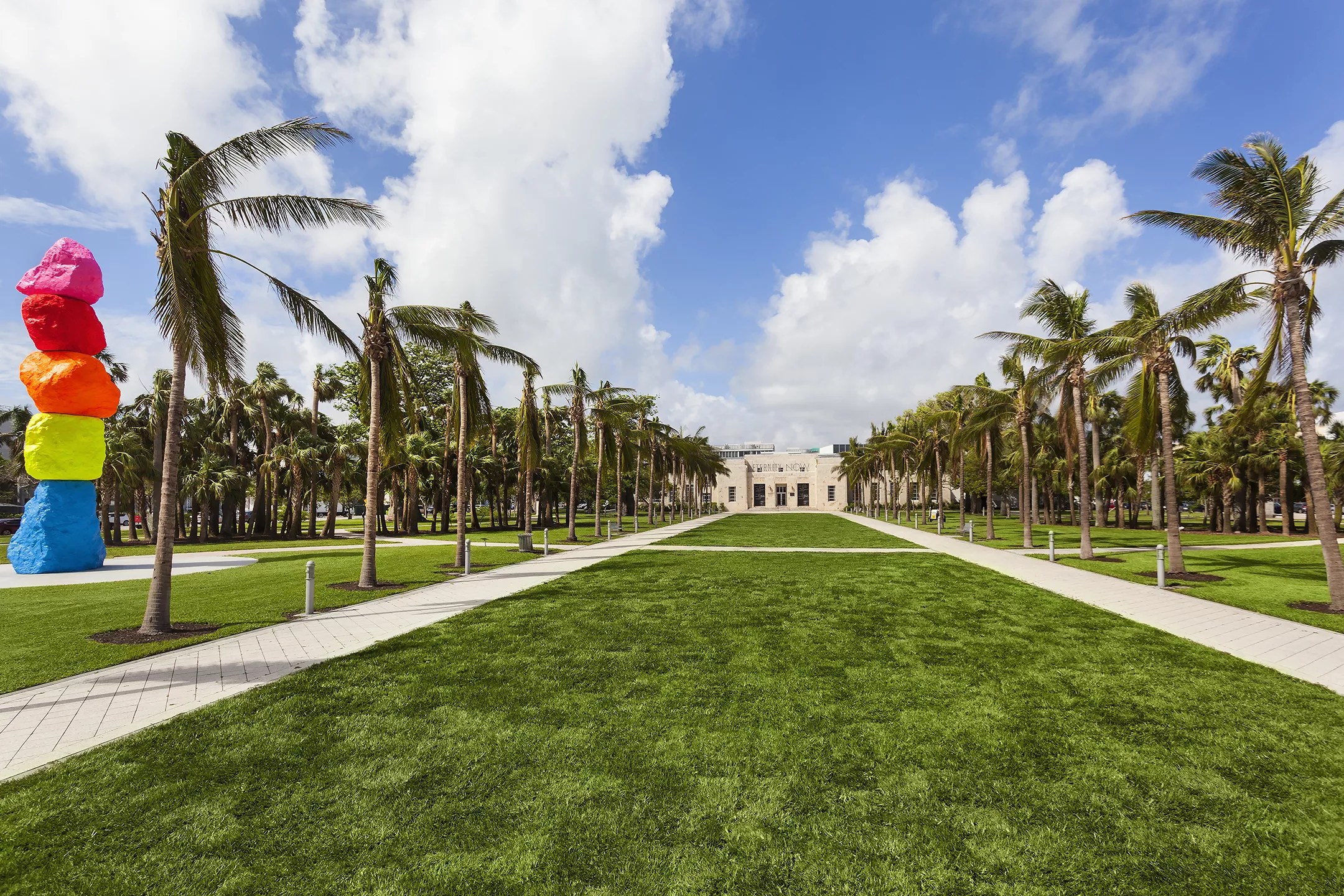
The Bass photo

Audio By Carbonatix
As an Ohio State University art history student, James Voorhies learned that art is a tool through which social and political issues can be viewed and understood in more profound, meaningful ways. This principle guides Voorhies today as he begins a new post as curator of the Bass.
“I see art as such a powerful way to learn and understand, to gain insight about the world we live in, and also look at the world in different ways,” says Voorhies, who aims to usher in the Miami Beach contemporary art museum’s approaching 60th anniversary with thoughtful exhibitions and facility expansion, including a new exhibition wing.
Silvia Karmen Cubiñá, executive director of the Bass, says Voorhies’ appointment comes at an exciting and critical time for the museum. Along with more than a dozen other Miami cultural institutions and facilities like the Miami Beach Hispanic Community Center, the Wolfsonian, and the Jewish Museum of Florida, the Bass will receive $20 million of city-issued funds per Miami voters’ approval last November, money the museum plans to allocate toward building a new, 6,000- to 8,000-square-foot exhibition wing.
“James brings an intellectual depth that is very important at this stage of the museum’s growth. We have been building a growing collection. Now is the time to interpret it, show it, and make a plan for where the collection is going,” Cubiñá says. “Having curatorial input is really important when creating a new exhibition gallery. He will be working alongside me, the building committee, and the architects to build a flexible space in which artists can build their commissions.”
Voorhies says this municipal bond will give the Bass’ permanent collection more room to breathe as the museum continues to create new exhibitions of midcareer and established contemporary artists. More exhibition space means visitors to the Bass will view more works from the original collection donated in 1964 by sugar-industry executive John Bass and his wife, philanthropist Johanna Bass, a bequeathment that effectively created the Bass.
“This municipal bond frees up space to display more of the permanent collection in new and exciting ways,” Voorhies says. “As a curator, I like to think about how the institution can constantly be rethought. How can we support artists better? How can we connect better to the public and to the art?”
The Bass is currently exhibiting “El fin de la imaginación,” Argentinian artist Adrián Villar Rojas’ site-specific installations and sculptures that explore and question the practices of memorialization and building monuments in an interplanetary context. Meanwhile, Voorhies is working alongside a pair of Miami-based artists who each will exhibit their work at the Bass later this year.
In March, Miami-based artist Carola Bravo unveils “Between Absence and Presence,” a temporary, site-specific artwork that will be installed on the Bass’ front lawn, Collins Park. The monumental work invites viewers to recognize the present moment and reflect on representation. In July, Miami installation artist Kerry Phillips will present her new work, Voorhies says, which frequently uses salvaged materials and found objects with aims of storytelling and remembrance.
Voorhies, who previously served as the executive director of the Tony Smith Foundation and the endowed director of Harvard University’s Carpenter Center for the Visual Arts, says when he works with artists to envision new exhibitions, he aims to create partnerships that make the impossible possible.
“In my work, I often think, how can I make exhibitions that help artists realize work that they wouldn’t be able to do in other spaces?” he says.
Voorhies says the next focus of the Bass’ offerings is the intersection of art and technology, as the museum recently received a $1.2 million grant from the James L. Knight Foundation to expand “exhibitions and public programs that push the boundaries” between the two worlds.

Silvia Karmen Cubiñá, executive director of the Bass, says James Voorhies’ appointment comes at an exciting and critical time for the museum.
The Bass photo
“The Bass has a long history of supporting art and technology, which continues today. Nam June Paik’s TV Cello is a recent acquisition,” Voorhies notes. “It’s about supporting not only artists working with screen and digital communication technologies but thinking about how new technologies influence how things are produced and what objects are used.”
As the Bass’ curator, Voorhies says he aims to use multiple communication channels to strengthen the museum’s connection to its audiences, which he recognizes is comprised of both local South Floridians and those who fly in from the world over in search of new, interesting contemporary art.
“Miami has such an extraordinary diversity in its audiences. As an institution, it’s exciting to think about how an exhibition, artwork, or program can strike a balance between connecting to local audiences and speaking internationally. Communication about exhibitions and programs is very important, as is organizing multiple public programs that allow different points of entry into an exhibition,” he says. “You can have an exhibition accompanied by a conversation with the artists, a multiday program for specialists, or a series of informal walk-throughs for visitors. The Bass has a long commitment to creating publications with their exhibitions – I aim to further that. Those records live beyond the exhibition’s time frame and allow people to engage with that work beyond the scope of Miami Beach.”
For Voorhies, whose two-decade-long career includes leadership, curatorial and educational roles, there’s no separating curation and education.
“I enjoy producing projects with artists and thinking how challenging ideas and concepts can reach the public realm through programs and publications. Exhibitions can also be informative and knowledge-producing. I really see curation as a natural extension of education in that way,” he says. “Education is so important to the Bass’ programs and the way they work with audiences of all ages.”
Cubiñá calls Voorhies’ perspective fresh and valuable, and she believes Miami’s visual art audiences will benefit from his unique vision and experience.
“It’s really important and powerful to have a new curatorial presence in Miami to have dialogues with our local artists and organizations,” she says. “Exchanges become enriched when new voices come in – they add a new dimension to the conversation.”
The Bass. 2100 Collins Ave., Miami Beach; 305-673-7530; thebass.org. Wednesday through Sunday, noon to 5 p.m.